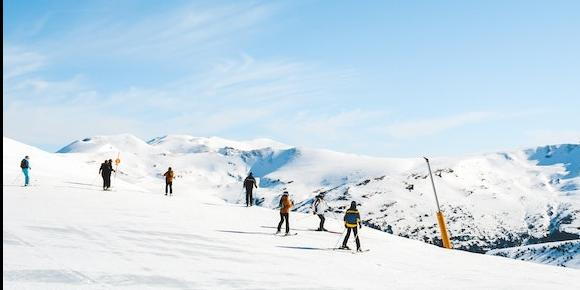Are women Snowboarders More Injury Prone Than Skiers?

- posted: Mar. 27, 2012
NEW YORK (Reuters Health) By Genevra Pittman. A study from a Vermont ski resort found that snowboarders get injured slightly more often than skiers, with the most injuries happening in young, inexperienced female snowboarders.
The types of injuries in the study also varied by sport, with snowboarders most likely to be taken out by a hurt wrist or shoulder, and skiers more commonly injuring a knee ligament. During 18 winter seasons with 4.6 million visitors, researchers counted a total of close to 12,000 injuries severe enough to bring skiers and snowboarders to the resort clinic. "It's true, these things do happen," said Dr. David Salonen, a radiologist who has studied ski injuries at Toronto Western Hospital -- and there's probably no way to avoid them completely. But, "For how many people are out there skiing (and snowboarding), injuries are relatively rare," added Salonen, who wasn't involved in the new study. Salonen told Reuters Health that as with any sport, if you use the equipment properly and don't push the boundaries of your experience or fitness, your chance of injury drops.
For the study, Dr. Robert Johnson from the University of Vermont College of Medicine in Burlington and colleagues analyzed injury reports from Sugarbush Resort in Warren, Vermont, from 1988 through 2006. Snowboarders accounted for 17 percent of the resort's visitors during that time, but slightly more of its injuries -- about 19 percent. Since 2001, the research team reported, injury rates have been consistently higher in snowboarders than skiers. On average, both skiers and snowboarders who got injured were younger and less experienced than a group of uninjured athletes who were surveyed for comparison. "If you've got a whole bunch of people that are young and trying to learn how to do something that is like an extreme sport, there's going to be a higher incidence of injury," Salonen told Reuters Health. "In any sport -- and skiing and snowboarding is one of them -- there are areas that will be more threatening and challenging to the athlete but also more intriguing.
As you're younger in age, you have a tendency to want to push your limits greater in any sport." Johnson's team did not find that injuries were more common in athletes who used so-called terrain parks at the resort, which include half-pipes and jumps, even though researchers had been afraid that would be the case when they were installed. One in five of all snowboarding injuries in adults and close to two in five in kids were wrist sprains and breaks, which are generally the result of a fall forward on to the snow, according to Salonen.
Fractured collar bones and concussions each accounted for about four percent of the injuries in adults and five percent in kid snowboarders. Among skiers, on the other hand, torn and otherwise injured knee ligaments sidelined one-third of the adult skiers, with leg muscle bruises being most common in kids, Johnson and his colleagues reported in the American Journal of Sports Medicine. Salonen said that it's hard to tell how bad those different injuries were, and one snow sport isn't typically associated with worse injuries than the other. He said that in both skiing and snowboarding, recreational athletes need to make sure their equipment fits correctly for their body size, ability and technique, and newcomers should start out with lessons and know their limits on the slopes. "It's like any sport," Salonen said, "if you're physically not in any position to be able to do what you're about to do, it's probably going to be a bad outcome." Johnson said that injury prevention is about "common sense, which is a bit difficult to conjure up with the young males... who imitate what they see on the X Games." While wearing a helmet and some kinds of wrist guards might be helpful, he told Reuters Health, making safe decisions is what's most important. "You have to modify your behavior and not go out hitting your head on trees, whether you're wearing a helmet or not."
If you are injured or just want to prevent injury from skiing or snowboarding, contact us. Dr. Amie Gregory, DC, CCEP, ANF is a San Francisco, CA and San Carlos, CA chiropractor that understands full body health. She works with athletes, expectant moms, office workers and everyone else in between. Contact our San Francisco, CA chiropractic office or San Carlos, CA chiropractic office today!
SOURCE: https://bit.ly/yUR70M American Journal of Sports Medicine, online January 20, 2012.
Location
Find us on the map - Please click desired location below
Precise Moves Chiropractic San Francisco
3150 18th Street, Suite 334
San Francisco, CA 94110, United States
24 hour Scheduling makes it easy!
(Hours may change due to doctor availability)
Hours in the mission district, San Francisco
8-12pm
Closed
3-6PM
8-12PM
3-8PM
8:00 am - 12:00 pm
Closed
